As the fifth-period bell rang, middle school students settled into their seats while teachers and staff enveloped the back of the crowded room. Everyone waited attentively for the speaker, David Miller, PhD, to begin his presentation. The topic: climate change.
Dr. Miller is not just a proud Rashi parent, he is also co-founder and managing director of the Clean Energy Ventures (CEVG). He was visiting Rashi middle school students to discuss one of the most serious challenges facing our world today and to explore solutions to help mitigate the inherent dangers of global warming.
Evidence of extreme weather and climate shifts have been exposed over the past several years — from rising temperatures and warming oceans to melting ice caps and rising sea level. In fact, temperatures have risen about 0.9℃/1.62℉ since the late 19th century, according to NASA, due — in large part — to an increase of carbon dioxide in the atmosphere. But scientists and politicians could not come to an agreement about what that meant for the future of civilization — until now.
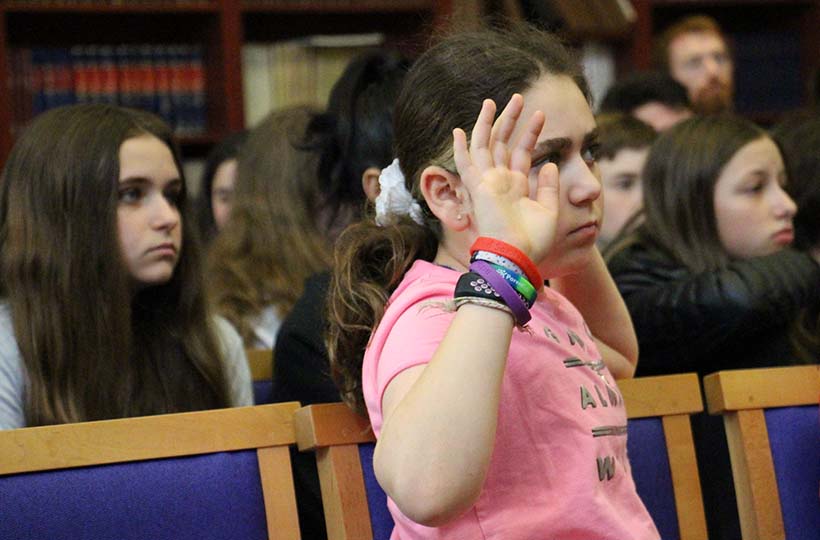
Dr. Miller talked about the Intergovernmental Panel on Climate Change (IPCC), an organization composed of scientists from around the world that study the effects of climate change. In the past, the group has taken a conservative position on climate change; which is why it was so surprising when the IPCC released a stunning 2018 consensus stating:
“We have a … small window of opportunity to avoid the worst impacts of climate change — impacts that are existential for entire nations and pose tremendous economic, health, safety and other risks to everyone. We are in an all-hands-on-deck situation that requires transformational change in the public and private sectors.”
Dr. Miller also noted the most recent and alarming statement from the IPCC that warns several hundred million lives are at stake if we do not act soon … 11-12 years to be exact.
What’s at Stake?
Populations across the world are facing serious repercussions due to extreme weather climate changes. While some areas are receiving record rainfall and flooding, other areas are experiencing severe drought. In many cases, food production has come to a halt and the negative implications are far-reaching.
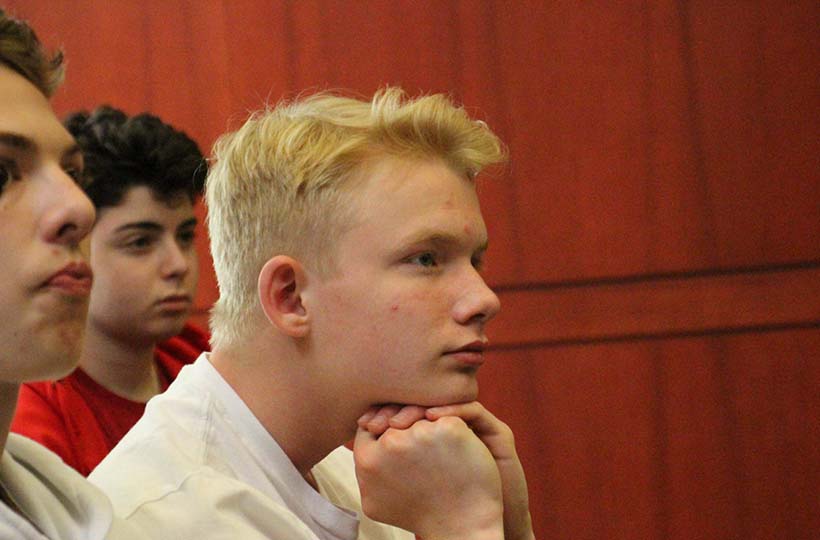
Dr. Miller explained how increasing temperatures are causing ocean waters to warm and arctic ice caps to melt at a much faster rate than scientists expected. Thousands of species are in danger of becoming extinct because they are not equipped to survive in severe climate changes. Extremely hot temperatures are also putting humans at risk of illness and even death — populations including the elderly, young children, and people with compromised health are especially susceptible.
Rising temperatures are causing ice caps to melt in Greenland and Antarctica. “If all of [Greenland] melts, oceans will rise about 20 feet. If all the ice sheets collapse, oceans will rise 280 feet,” said Dr. Miller. “We are at over 400 parts per million of CO2 in the atmosphere right now, that means the ocean should be 80 feet higher than we are today.”
The slide presentation projected on the screen showed a map of the United States. With the click of a button, the next slide showed the majority of Florida under water.
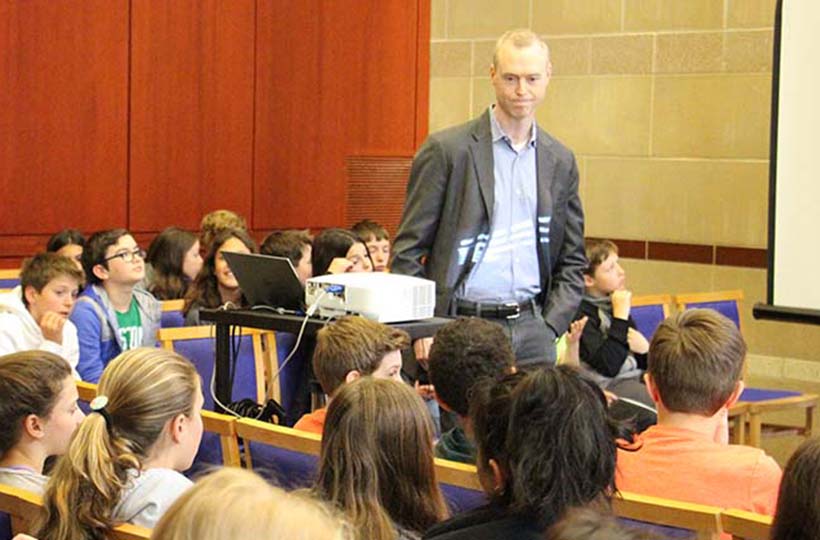
One student raises his hand and asks, “Does that also mean that all the cities near the coast that aren’t thousands of feet above sea level will go under water?”
Miller replies with a somber, “Yes, over time. This will happen very slowly.”
Hushed whispers reverberated softly around the room as students processed the gravity of the situation.
Simulations and Solutions
If we do nothing avert the effects of climate change, we will face a 4℃/7℉ increase. According to scientists, Dr. Miller said, “that means the temperature is incompatible with the organized global community, beyond adaptation, and devastating to ecosystems.” In short, if we keep emitting CO2 at the current rate, then we only have about 11 years to make substantive changes. After the year 2030, there is a high probability that the earth’s conditions will be too unstable for humanity to survive. “The good news,” Dr. Miller points out, “is that we can make changes.”
To illustrate how we can actively reduce CO2, and thus reduce temperatures, Miller shows the students a simulation that few people have had the privilege of seeing. The software program, developed by MIT and Climate Interactive, was used by the Obama administration and the Paris Climate Agreement to positively address climate change. Miller said the simulator has tens of thousands of parameters and when one is changed the program runs about 38,000 equations to produce a projected outcome.
Miller asked the students which parameters they would choose to mitigate rising temperatures. Some responses were to reduce burning coal or maximize renewables, others said to replant forests or reduce methane. After a brief, yet hotly debated discussion, they arrive at a few viable solutions:
- Move toward 100% carbon-free electricity
- Put a price on carbon usage
- Encourage renewables
- Discourage fossil fuels
- Increase research and development for new technologies
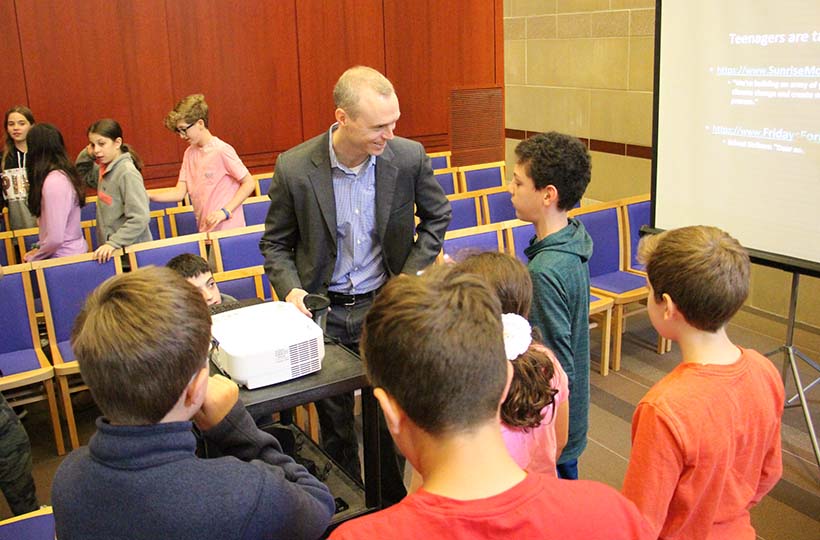
Resources for Young People
While teens cannot vote, they can still actively pursue their interest in climate change advocacy. Before students headed to their next class, Dr. Miller encouraged them to do the following:
- Speak with elected officials and urge them to act on climate change policies quickly
- Spread the word to businesses, family, and friends about reducing carbon footprints
- Join local organizations, such as Sunrise Movement and Fridays for Future
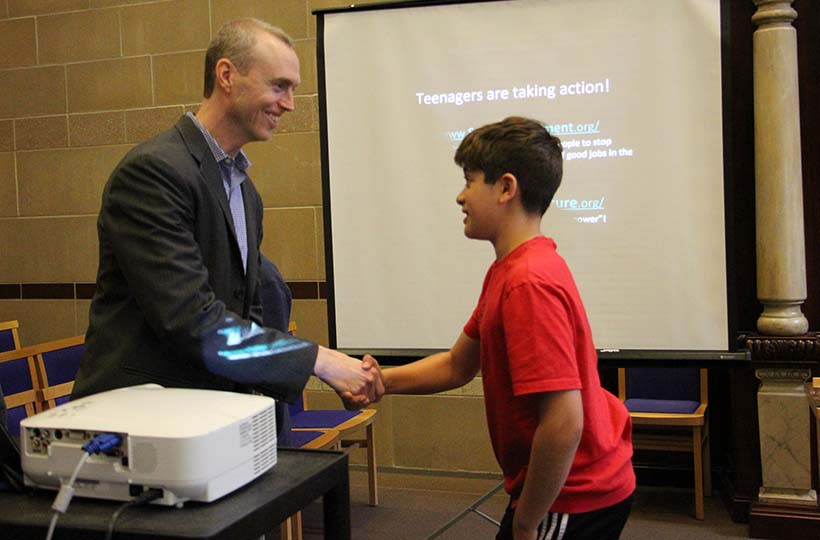
For related articles about Rashi student advocacy, read Students Reflect After Youth Climate Strike from Jewish Boston.

